Last year, after working my butt off for 6 years, I was finally able to quit my job to focus on my new career – my dream career – as a writer. Now I earn a living by writing full time. But I couldn't have done it without the help of a few nootropics. That's what this article is all about: the best nootropics for writing.
Whether you're looking for something to snap you out of the dreaded writer's block or just something to give you a little more mental energy, the nootropics on this list can all help you write. While they won't make you a better writer, they can definitely help you to be more productive.
The Best Nootropics For Writing
All of the nootropics on this list are things that I've tried personally and work well for me. Some of them I've used a few times in the past. Others, I still use regularly. But all of them work for me. Will they work for you? The only way to know is to try them yourself.
Now when I say that these are the best nootropics for writing, what exactly does that mean? It doesn't mean it'll improve your writing ability. That's something you have to work on yourself. It means they'll help you to think clearer so you can write faster and be more productive.
Every day, I keep track of how many words I write. On days that I take some of these nootropics, my word counts increase dramatically. There's no question about their effectiveness. I have proof.
By increasing focus, improving memory, reducing anxiety, and more, these nootropics allow me to get more words on the page. Well, maybe not on the page – on the screen. So lets get to the list of the best nootropics for writing. The first three are individual nootropics and the last two are simple nootropic stacks.
1. Modafinil
If you're a regular reader of this website, it should come as no surprise that modafinil is at the top of the list. It's one of the most-commonly-used nootropics around the world today. There are tons of studies to support modafinil's safety and effectiveness. For most people, it works.
Modafinil is classified as a eugeroic or wakefulness-promoting substance. For me, it definitely increases alertness and focus. I find it helps to stay on task and get more done. My word counts are always higher on days that I use modafinil. Here are some of the nootropic benefits that are commonly reported from it:
 Increased focus
Increased focus- Increased attention
- Improved mood
- Increased alertness/wakefulness
- Improved memory
- Increased motivation
- Increased productivity
I've never noticed much improvement in my mood with modafinil. But all the other benefits that users often report, I have noticed. Modafinil doesn't make me feel overstimulated, but it does make me feel more alert, focused, and attentive. And it definitely increases my productivity, whether it's writing or something else. You can learn more here: Modafinil – A Powerful and Popular Nootropic.
And I should also mention armodafinil. I was going to include it in this list but, since it's so similar to modafinil, I'll just briefly discuss it here. Armodafinil is a slightly more potent version of modafinil. I find its effects to be almost identical. The only differences are that a lower dosage is needed and the effects last a little bit longer. You can learn about modafinil's slightly stronger sister here: Armodafinil For Cognitive Enhancement.
2. Kratom

Wild kratom plant
This usually isn't thought of as a nootropic. However, I'm including kratom in this list because it can have a nootropic effect for a lot of people. And as you may have guessed, I'm one of those people. Kratom definitely helps me to write – there's no question about it.
In low doses, kratom can be mildly stimulating. In higher doses, users often find it to be sedating. Kratom is a plant that has been used in different parts of the world for centuries. It has a long list of potential benefits and lots of research is being done to study its effects. Here are some of the nootropic benefits that kratom can have:
- Improved mood
- Increased energy
- Increased motivation
- Reduced anxiety
- Reduced fatigue
- Increased productivity
I can honestly say that I've experienced all of those nootropic benefits from kratom. It just makes me feel more energetic and words seem to flow much easier. And kratom can also have a number of non-nootropic benefits including pain relief, immune system boosting, and more.
It should be noted that for most people, kratom should not be taken every day. If you're like me and use kratom for its nootropic benefits, it should only be used a few times a week at most. When taken daily, users can develop a tolerance to kratom. But when taken only occasionally, kratom can be great for writing, other creative tasks, and overall productivity. You can learn more here: The Nootropic Benefits of Kratom.
3. Mucuna Pruriens

A mucuna flower
Like kratom, this is another plant that has been used medicinally all over the world for centuries. Mucuna pruriens, or mucuna for short, is a natural source of L-dopa (levodopa). This is an amino acid that the body uses to make the neurotransmitter dopamine.
Dopamine is known to play a role in attention, motivation, mood, pleasure, anxiety, and more. Taking mucuna can increase dopamine levels in the brain. So it's no surprise that its benefits include things like increased motivation, improved mood, and decreased anxiety. Here are some of the nootropic benefits that mucuna users have reported:
- Increased attention
- Improved mood
- Increased motivation
- Reduced anxiety
- Increased sense of well-being
It's been a few years since the last time I used mucuna, but when I did, I experienced all of the above. However, most of those effects were mild – noticeable but mild. Some people who have used mucuna report powerful cognition-enhancing effects while others report none at all. The only way to know if it will work for you is to try it yourself.
Unlike both modafinil and kratom which work after the very first dose, mucuna can take time to become effective. It can take a couple weeks of daily dosing to really notice mucuna's nootropic benefits. So if you decide to try it and don't notice any effects right away, be patient. You can learn more here: Mucuna Pruriens For Anxiety, Motivation, and Mood.
4. Caffeine and L-Theanine
Unlike the individual nootropics listed above, this is a nootropic stack. Stacking simply means taking more than one nootropic at a time. By combining two-or-more substances, a greater nootropic effect can be reached than by taking them individually. And that's definitely the case with this simple and effective nootropic stack.
Caffeine and L-theanine is my go-to nootropic stack for writing. There's no question about it: this stack works. It's no secret that caffeine can increase alertness, improve mood, and more. But when taken with L-theanine, caffeine becomes even more effective.
L-theanine is a non-essential amino acid naturally found in green tea. It has a calming effect but isn't sedating. When taken with caffeine, L-theanine can eliminate some of its negative effects like increased anxiety, jitters, and the dreaded crash a few hours after consumption. Here are some of the nootropic benefits that L-theanine and caffeine users have reported:
 Increased focus
Increased focus- Reduced fatigue and tiredness
- Improved memory and concentration
- Increased alertness/wakefulness
- Increased energy
- Promotes a state of calm focus
- Increased productivity
I've experienced all of these benefits and many other users have, too. While not everyone responds to this simple nootropic stack, most people seem to. Caffeine's already the most popular nootropic around the world. Obviously, it works. By taking L-theanine with it, you can get into a calm, focused mindset.
Like I said, this is my go-to when I need a boost. It's simple, safe, and effective for most people. I always get more words written on days that I take caffeine and L-theanine. It makes the words just flow out of me easier. You can learn more about this simple stack here: L-Theanine and Caffeine – The Perfect Combo.
5. Phenylpiracetam, Aniracetam, & CDP-Choline
This stack is a little more complicated than the one above. It includes two racetams and a choline source. The racetams are chemically-similar substances, many of which have nootropic properties. In fact, the first nootropic ever created, piracetam, is a member of the racetam family. Phenylpiracetam and aniracetam are both popular nootropics by themselves, but have a synergistic effect when taken together.
CDP-choline, the third ingredient in this cognition-boosting formula, is a choline source. The body uses choline to make the neurotransmitter acetylcholine. This neurotransmitter is known to play a role in memory, learning, attention, and more. While CDP-choline can have a nootropic effect on its own, it works even better when stacked with one-or-more racetams.
I've used this stack a handful of times in the past and it delivers a modest-but-noticeable increase in focus and motivation, and a reduction in anxiety. Aniracetam is the anxiety reducer. It's known for increasing focus while decreasing anxiety. Phenylpiracetam can further increase focus. And I find that I'm more motivated when I take phenylpiracetam. Here are some of the nootropic benefits of this stack that users have reported:
 Increased focus
Increased focus- Improved memory
- Improved mood
- Increased motivation
- Reduced anxiety
- Improved learning
- Increased productivity
I've experimented with a number of racetam-choline stacks and this one is one of my favorites. Some users like to stack as many as 4 or 5 racetams with a choline source, but I usually stick to 2 or 3 at most. Here are a few other racetam-choline combinations I like that I find to be on par with the phenylpiracetam, aniracetam, and CDP-choline stack:
- Phenylpiracetam, fasoracetam, CDP-choline
- Piracetam, oxiracetam, aniracetam, alpha-GPC
- Phenylpiracetam, aniracetam, alpha-GPC
Alpha-GPC is another choline source similar to CDP-choline. Since many of the racetams affect the neurotransmitter acetylcholine, taking a choline source with them can increase their effectiveness. All of these racetam-choline stacks improve my writing to more-or-less the same degree. But if I had to pick just one, it would be phenylpiracetam, aniracetam, and CDP-choline. You can learn about some other stacks here: 5 Common Nootropic Stacks.
Conclusion
 Some people love to write, others hate it. Me? I both love and hate writing. It can be incredibly rewarding, but it can also be incredibly frustrating. Fortunately, I've got a number of nootropics to help cut down on that frustration so I can get more words on the page.
Some people love to write, others hate it. Me? I both love and hate writing. It can be incredibly rewarding, but it can also be incredibly frustrating. Fortunately, I've got a number of nootropics to help cut down on that frustration so I can get more words on the page.
Whether you're a college student, a professional writer, or just someone who likes to write, the nootropics above can all help you to be more productive. I've certainly benefited from them. While they won't automatically make you a better writer, they can help you to think clearer and get more words written. And that's what will make you a better writer – writing more.
Have you used any of these nootropics for writing? Or how about other nootropics for writing? Feel free to leave your experiences in the comments section at the bottom.
To learn more about nootropics, sign up for the Nootropics Zone newsletter. You'll get the free gift, The Ultimate Nootropics Quick Reference Guide.

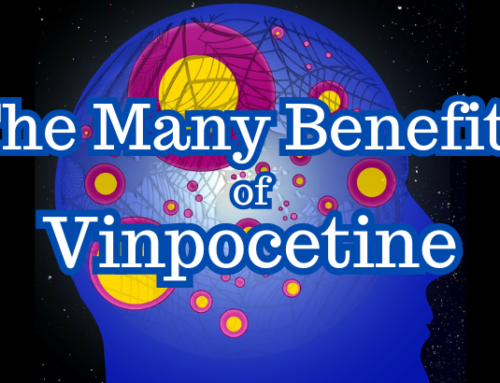
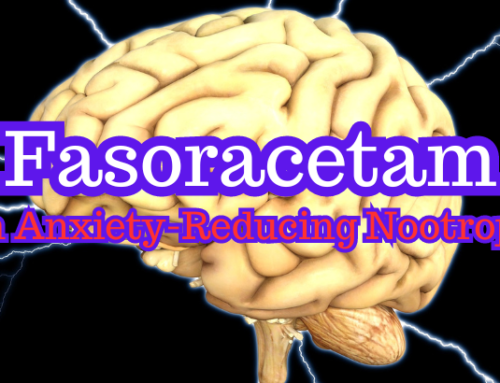
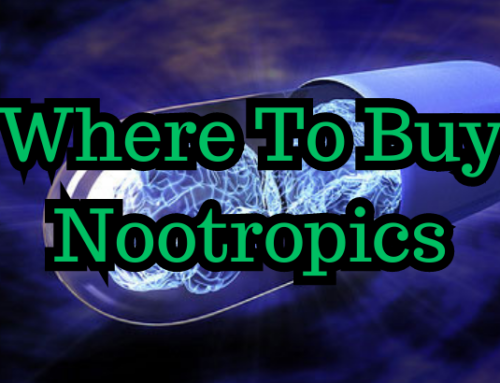
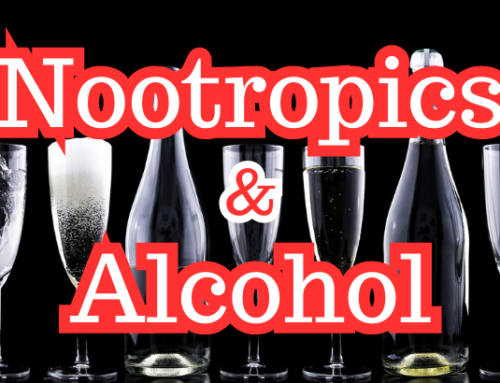
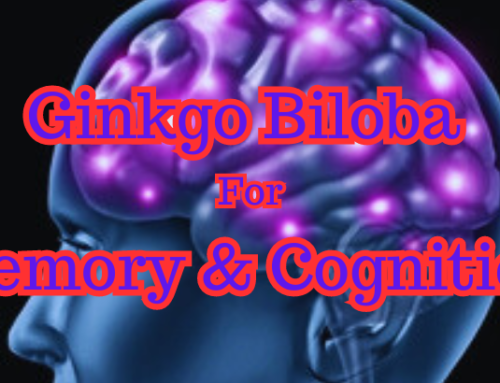

Is there a Nootropic or Stack that will help Improve Spatial Intelligence?
Also what will be the Benefit of stacking Alpha GPC and Citicholine.
How Good is PhosphatidleCholine as
a Choline Source? Finally. What is the
Best online site for Modafinil and Armodafinil? Please Respond to my
Inquiry soon. Thanks and Stay Safe.
Hi Larry. Thanks for the comment. Since everyone responds differently, it’s impossible for me to know what might help you with spatial intelligence. But some type of racetam-choline stack would probably be your best bet. Alpha-GPC and CDP-choline are usually not stacked together since they are both choline sources. There’s probably very little benefit to stacking them as your body can only convert so much choline to acetylcholine. However, they do work slightly differently, so there may be some small benefit to stacking them. I’ve never really researched or tried phosphatidle choline (I don’t thing – there are many choline sources), so I’m not sure. Maybe I’ll do some research and write up a post about it. And lastly, I’d recommend ModafinilXL. I hope that answers your questions. 🙂